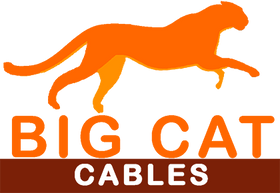A media converter is a networking device that transparently converts Ethernet or other communication protocols from one cable type to another type, usually copper CAT/UTP to fiber. Media converters are often used in pairs to insert a fiber segment into copper networks to increase cabling distances and enhance immunity to electromagnetic interference. They can also extend LANs, and convert link speeds and fiber modes.

Benefits of Media Converters
-
Extend LAN Distance with Fiber
Copper-based Ethernet connections are limited to a data transmission distance of 100 meters when using UTP cable. By using Ethernet to fiber conversion, you can extend link distance up to 80 kilometers or more.
-
Maintain Investments in Existing Equipment
Media converters enable you to migrate a local network to fiber while protecting your investment in existing copper-based hardware. This means no costly, time-consuming overhaul to your infrastructure.
-
Protect Data from Interference
Electromagnetic interference, or EMI, can cause corruption of data over copper-based Ethernet links. Data transmitted over fibre optic cable is completely immune to this type of noise, ensuring optimal data transmission and network performance.
-
Speed Conversion
Media converters allow you to convert link speeds from 10 Mbps to 100 Mbps or from 100 Mbps to 1000 Mbps.
-
Power over Ethernet
Power over Ethernet, or PoE, simplifies installation of Wi-Fi access point, IP cameras and more by eliminating the need for a local AC power circuit.
Types of Media Converters
Copper-to-Fiber Media Converters
Copper-to-fiber media converters enable connections of copper-based Ethernet equipment over a fiber optic link. This extends links over greater distances with fiber optic cable, protects data from noise and interference, and future-proofs a network with additional bandwidth capacity.
Discover our selection of Media Converters.
Fiber-to-Fiber Media Converters
Fiber-to-fiber media converters connect different fiber optic networks and support conversion from one wavelength to another. They provide connectivity between single-mode and multimode fiber, as well as between dual and single fiber.
PoE Media Converters
Power-over-Ethernet (PoE) media converters provide reliable and cost-effective fiber distance extension to PoE-powered devices. PoE media converters can power devices like IP phones, videoconferencing equipment, IP cameras and Wi-Fi devices over copper UTP cabling.
Stand-Alone vs. Chassis-Based Media Converters
Stand-alone media converters are compact and can be AC or DC powered. They are commonly used to convert one copper link to fiber in point-to-point installs. These converters are easy to deploy and offer a range of useful functionality for your network, such as auto-MDI/MDIX, link fault pass through and more.
Chassis-based media converters are used in high-density locations such as a data center or equipment room. They mount in racks alongside network switches, enabling the conversion of copper ports on legacy switches to fiber.
Managed vs. Unmanaged Media Converters
Managed media converters give network administrators complete control of data, bandwidth and traffic. This lets admins manage and troubleshoot a network remotely and securely to achieve and maintain optimal performance and reliability. Thus, these converters are most suitable for environments requiring a medium- to large-scale deployment of media converters.
Unmanaged media converters are "plug-and-play" converters which are easy to install and troubleshoot. Unlike managed converters, these do not provide the same level of monitoring, fault detection and configuration.
Commercial vs. Industrial Media Converters
Commercial media converters are designed for typical office and data center environments where ambient temperature is controlled. These converters provide a cost-effective way to extend the distance of your network and improve the life of copper-based equipment. They are perfect for commercial applications that do not deal with extreme environmental issues.
Industrial media converters convert data between twisted pair cabling and multimode or single-mode fiber optic cabling, extending the distance of a network. They are able to withstand extreme temperatures (-40°C to 75°C) and harsh conditions, feature redundant power design and are designed for high shock and vibration locations. This makes them a perfect fit for industrial networks. Industrial media converters are commonly used in applications such as building automation, oil and gas drilling and mining.
Applications and Use Cases for Media Converters
-
Overcoming Copper's Limits
Media converters extend LAN reach far beyond the 100 meter limit of copper CAT cabling by converting links to fiber. Fiber links enable link distances of up to 80 kilometers.
-
Enterprise
PoE media converters backhaul Wi-Fi data and power access points, improving network functionality and reliability in commercial applications.
-
Security and Surveillance
PoE+ simplifies installation of IP security cameras by eliminating the need for a power circuit near the installed device. PoE+ media converters power these devices and backhaul signals to remote data centers or operations centers.
-
Government and Defense
Media converters provide secure, high-performance LAN connections from the data center to desktops with fiber. Highly reliable with unsurpassed bandwidth, speed and security, fiber-to-the-desktop is a perfect fit for government and defense applications.
-
Fiber Mode Conversion
Never worry about varying fiber types in your application again. Convert fiber links from multimode to single-mode and vice versa with media converters.
Big Cat Cables presents the information on our website, including the blog and live chat support, as a service to our customers and other visitors to our website subject to our website terms and conditions. While the information on this website is about data networking and electrical issues, it is not professional advice and any reliance on such material is at your own risk.

